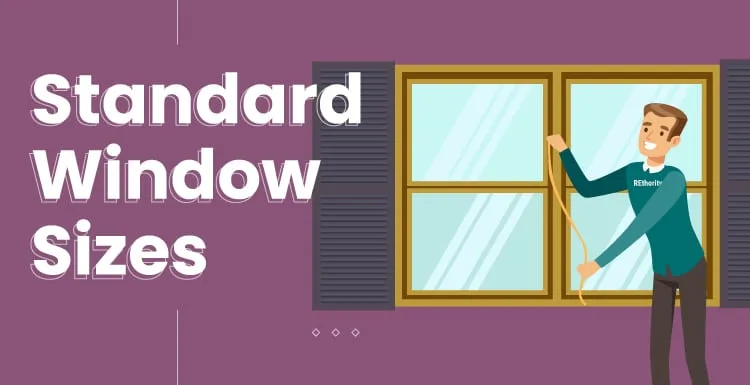Window sizes use a standard notation. It gives the window width and height in feet and inches. So, what is the standard window size?
Two standard window sizes include:
- 2020 windows are 2 feet wide and 2 feet high.
- 2426 windows are 2 feet 4 inches wide and 2 feet 6 inches high.
These are the nominal measurements, however. The actual window will measure one-half inch smaller in both dimensions to allow for installation.
This means a 2020 window is actually 23 and a half inches wide by 23 and a half inches tall. A 2426 window will measure 27 and a half inches wide by 29 and a half inches high.
Not all windows are sold using this size notation. At Home Depot, for instance, you can shop online using the actual measurements of the windows in inches.
So instead of describing a window as a 2030 window, you’d see the dimensions given as 23.5 in. by 35.5 in.
Single Hung and Double-Hung Window Sizes
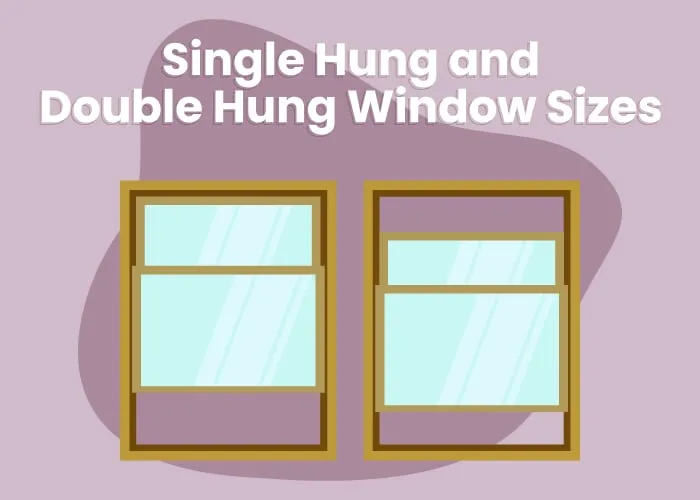
Popular double-hung sizes include:
- 24 inches by 36 inches
- 24 inches by 46 inches
- 28 inches by 54 inches
- 28 inches by 66 inches
- 28 inches by 70 inches
- 34 inches by 46 inches
- 34 inches by 62 inches
The most popular replacement window type is the double-hung window. These windows allow both the upper and lower portions of the window to slide up or down. Single-hung windows look like double-hung windows.
The difference is that only one of the windows slides up or down to open. You can find many sizes of single-hung and double-hung windows in stock or available for regular order.
Standard window widths range from 24 inches to 48 inches. Standard window heights range from 36 inches to 72 inches.
Sliding Window Sizes
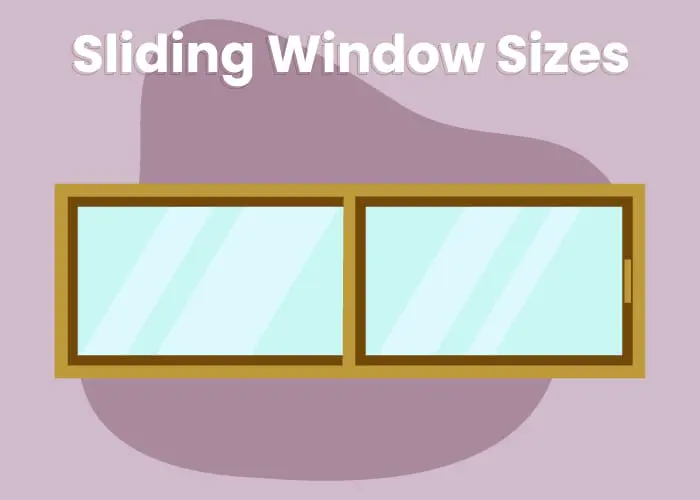
Popular sizes for sliding windows include:
- 24 inches by 24 inches
- 36 inches by 36 inches
- 48 inches by 24 inches
- 48 inches by 36 inches
These types open by sliding horizontally rather than vertically. Sliding windows are usually 36 inches to 84 inches wide and 24 inches to 60 inches in height.
Picture Window Sizes
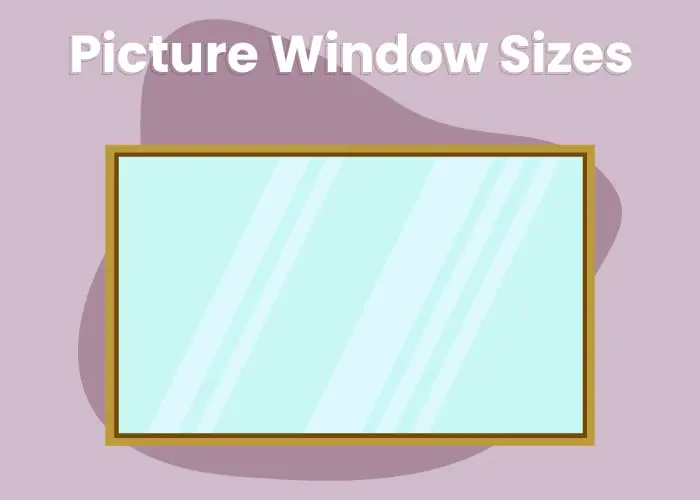
Picture windows may be larger than other windows. They typically range from 24 inches to 96 inches wide and from 12 inches to 96 inches tall.
Picture windows don’t have any moving parts. Since they don’t open, it’s easier and less costly to have picture windows made to order in a custom size.
Casement Window Sizes
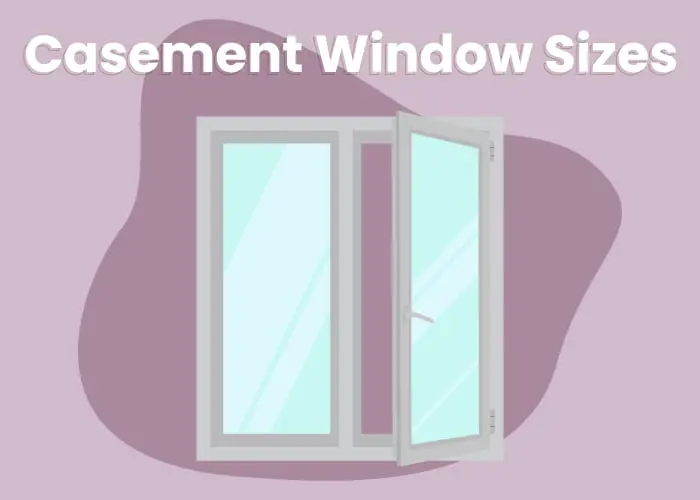
- 25 inches by 35 inches
- 29 inches by 47 inches
- 29 inches by 59 inches
Casement windows have a hinge that opens from the side. You can find casement windows as wide as 107 inches and 60 inches high.
Awning Window Sizes
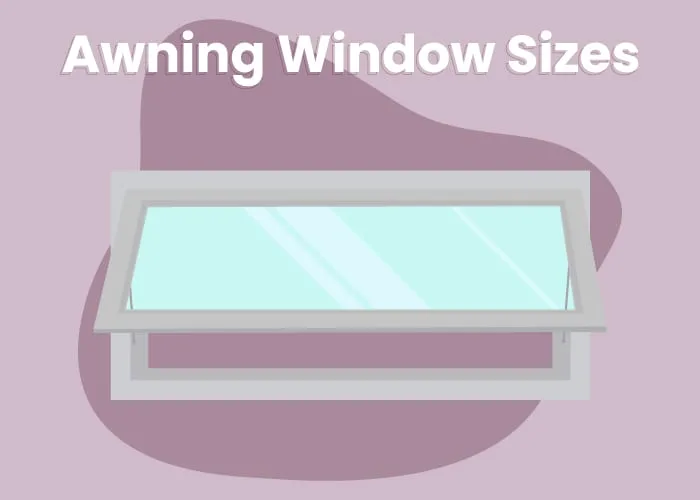
Awning windows are manufactured with a hinge on the top edge that lets the window swing open.
Standard-sized awning windows may be 24 inches to 60 inches wide and 20 inches to 42 inches high.
The Purpose of Windows

Windows can affect how quickly a home sells and often increase resale value.
Windows are one of the first things homeowners and real estate professionals pay attention to when preparing a home for sale.
The curtains or blinds should be open. The glass should be clean. The screens may be removed to increase light.
Windows also have a big influence on the amount of energy it takes to heat and cool a home.
Windows with improved energy efficiency can make a sizable difference in utility bills. Good home windows help to block outside noise. They even provide emergency exits in case of a fire.
Why Replace Windows?
With all this in mind, it’s not surprising that replacing windows is a common home improvement project.
Bigger, better-sealing, and easier-to-operate windows can improve the experience of living in a home.
They can also make it easier to sell or rent. To replace windows or estimate the job cost, it’s important to know the size of the window being replaced. There are several different types of windows.
Each type comes with standard window dimensions. Whether replacing existing windows or installing new ones, here is what you need to know about standard sizes.
Why Do Window Sizes Vary?
There is no universally accepted set of standard window sizes. There are, however, some popular window sizes that you’ll likely be able to find at a local home improvement store.
Different Vendors

These common window sizes have a wide range. For instance, Home Depot’s online store lists approximately 100 width and height combinations for one common window style.
You can also have custom windows made in special sizes. However, custom sizes are much more costly than the popular standards from window manufacturers.
Sizes Change With Time

If you are refitting an older home, it may not have windows that are included in the current set of popular sizes. If this is the case, custom-sizing may be the way you need to go.
However, it may be worth considering altering the rough frame for the window to take one of the standard sizes.
Older homes tend to have smaller windows than newer ones. Increasing the window size can update an older home and make it more appealing.
There Are Standards Though

Generally speaking, it’s best to stick to the standards. However, that covers a wide range. And retailers may have some unusual sizes in stock.
Check what’s available without a special order before ordering custom. Odds are good; you can find a window that will fit most installations without needing custom sizing.
How to Measure Windows
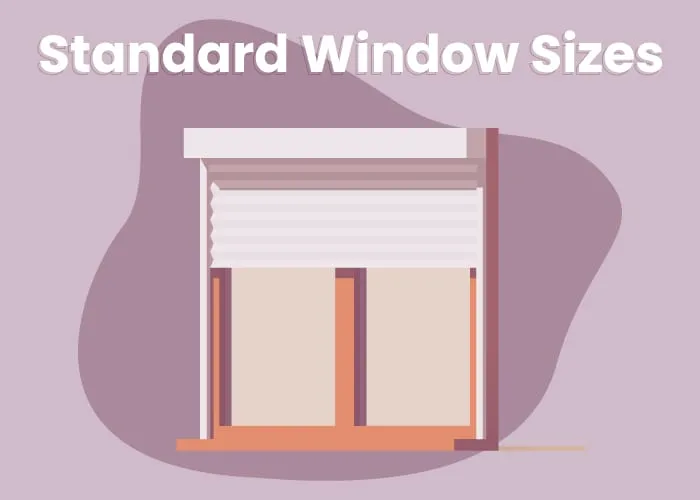
The most accurate way to measure for a window installation is to measure the rough opening.
This is simple to do for new construction.
- You measure each dimension in three places. For width, measure side to side between the jambs at the top, bottom, and center of the rough opening.
- For height, measure from the sill at the bottom to the top of the window opening. Again, take three measurements, from the left, right, and center.
- Use the smallest measurement in each dimension. Take three measurements because rough openings may not be perfectly square. The window may be too big if you don’t use the smallest measurement.
- Also, measure the depth. To measure depth, measure from the inside window strip to the outside window strip. Anything other than 3 and one-quarter inches is a non-standard size.
- If you are measuring to replace an existing window, it may not be as easy to measure the rough opening. In that case, you may want to consider having a professional do it.
A home improvement retailer will generally be happy to have an expert come out to measure your windows.
That way, you can be assured of accurate window measurements and a good fit.
Final Thoughts
Window replacement is a part of many home improvement projects. New windows can make a home more pleasant, economical to live in, and easier to sell.
And when building a new structure, choosing standard window sizes can help control costs. Knowing the standard sizes for the main types of windows is key.
This knowledge helps homeowners and real estate professionals make these sorts of decisions right the first time.

